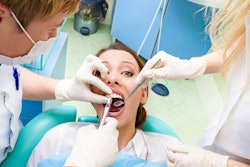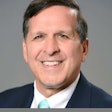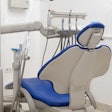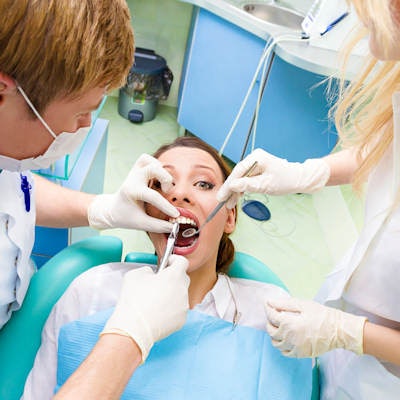
Riddle me this: More adults have dental benefit coverage, and fewer adults report cost as a barrier to dental care, yet dental visits stayed flat in 2015. Marko Vujicic, PhD, chief economist for the ADA Health Policy Institute, recently discussed what could be driving these trends in a November 1 webinar.
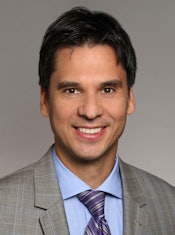 Marko Vujicic, PhD. Image courtesy of the ADA.
Marko Vujicic, PhD. Image courtesy of the ADA.The percentage of adults who said they have visited the dentist in the past year has remained flat for several years, which could be in a "new normal" for dentistry, according to Vujicic, who is also vice president of the Health Policy Institute. The new data support his hypothesis, and if it's true, the profession may need to rethink how to get adults, particularly younger adults, into dental chairs.
"We seem to be in this very sluggish, flat dental care use environment despite some pretty big changes in insurance coverage and cost barriers," Vujicic said. "That warrants a lot more research, but maybe driving down cost barriers won't increase dental care usage as much as we think in this age group."
Something's not adding up
Over the past couple of years, the percentage of 19- to 64-year-old adults with dental benefits has increased slightly. About 2 out of 3 adults had dental benefit coverage in 2015, new data showed.
Of those with dental benefits, the vast majority have private dental insurance. The gains in dental coverage are mainly due to increases in private insurance, Vujicic said, but it can also be attributed to a rebounding job market and Medicaid expansion.

Similarly, fewer adults are reporting that cost is a barrier to dental care. Only 11.3% of adults said they needed dental care in the past 12 months but couldn't get care because of cost.
"You can call it what you want -- cost, perceived cost, it doesn't matter. This is what's in people's heads," Vujicic explained. "They feel dental care is too expensive and unaffordable, and that's the top reason why adults report not going to the dentist."
While cost is still the top reason adults report not getting dental care, fewer adults are reporting cost is a barrier to care, which is why Vujicic is puzzled that dental utilization rates have stayed flat. In 2015, 36% of adults visited the dentist, a slight uptick from 2014, but one that isn't statistically significant.
"I and other researchers and economists would have predicted that this big drop [in perceived cost] would have led to more people visiting the dentist, and it's not," he said.
“[Adults] feel dental care is too expensive and unaffordable, and that's the top reason why adults report not going to the dentist.”
So now the question is why?
Vujicic said that no one knows, but he did offer a few guesses. For instance, the private insurance that adults get through employers may not offer robust benefits.
"I don't know what's going on in terms of the actual quality of that coverage," Vujicic said. "The employers are asking for more with less, or even less with less, in terms of premium reductions. I think that's translating to less rich benefit packages. As researchers, we want to look into, well, dental coverage rates are rising but are actual benefit levels rising as well?"
However, the sluggish utilization market could also be because cost isn't as much of a barrier as previously believed, particularly for younger adults who rank convenience as the second-greatest barrier to care after cost. Vujicic suggested the profession should continue to tackle cost barriers, but it should also actively work to bring in new patients through exploring partnerships with other healthcare professionals and by making it more convenient for patients to visit their dental provider.
"We're already seeing this. Dentists, especially younger dentists are doing amazing things ... innovating, trying to make it really easy for patients to visit the dentist, to book online, to see different information on their phone," Vujicic said. "This is a real culture change that needs to happen, and I'm convinced that will bring a lot more people into dental care if the convenience problems can be tackled."
The boomer market is booming
Meanwhile, older adults or seniors have their own confounding trends. Notably, more seniors are reporting cost as a barrier to care, yet dental care use for adults age 65 and older is actually increasing.
"We have rising cost barriers and rising dental care use, so that's something to me that's a little bit tough to explain," Vujicic said. "I don't have a strong hypothesis."
For instance, seniors are by far the least likely of any age group to have dental benefits. Only 1 out of 3 seniors had dental benefits in 2015, a stark contrast from children and even adults. Not surprisingly, more seniors are also reporting cost as a barrier to dental care.

Yet more seniors are also visiting the dentist than ever before. So what's going on? Adults age 65 and older who visit the dentist are exclusively high-income seniors, a fact that Vujicic stressed several times throughout the webinar.
"We're seeing growing dental care use among seniors. I've called it at times a booming boomer market," he said. "But it's exclusively high income. This is important to understand. ... We're not driving down cost barriers among seniors, not at all."

This is evident because the dental care gap is widening between low- and high-income seniors, unlike for children for which the gap has narrowed. Vujicic doesn't see anything on the horizon that would reverse these trends.
"If things stay as they are, we're predicting continued increasing dental care use trends among children, and increasing dental care use among seniors who are exclusively high-income seniors," he said. "I don't see anything positive happening on the low-income senior side without change in the environment, coverage, et cetera, or for working-age adults as well."




